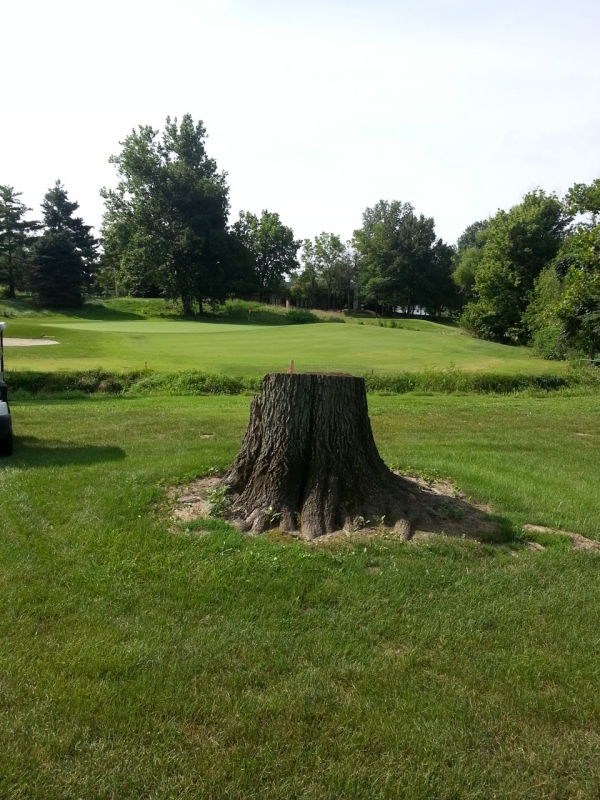The Psychology of Change
Human beings are creatures of habit, are we not? We certainly have a tendency to cling to the proverbial status quo. We also fear what we don’t know. For many things in life, routine and comfort can be good. In golf, however, we can easily get our boots stuck in the mud to the point that our reluctances and preconceptions do us more harm than good. I’m referring to making improvements to golf courses…renovating, remodeling, restoring – all forms of course upgrade work that at some point and time is essential for the ongoing viability of a course.
With renovation work so active in the US right now, I’m spending a lot of time with committees, club leaderships, superintendents, owners, etc. discussing what remedies may be in order. For the most part, they understand that change is needed – that improvements can be made selectively and thoughtfully that will benefit both their short and long term goals. But even with the most positive and proactive clubs, there always exists a faction of members who have no interest in conducting any sort of work and are usually unwilling to listen to anything to the contrary. Interestingly, their excuses are usually very much the same everywhere I go. Here are some I hear most often:
“The course is perfectly fine – I’ve been playing here for 40 years and it’s never been better.”
“I’m too old to give up any of my time on the course so you can come in here and tear it all up and make it harder.”
“I’m against any trees being removed. My father planted those trees when he was president 30 years ago and they’re beautiful – there’s simply no reason why trees should be removed.”
“We don’t have millions of dollars to throw at this course. We don’t need a tour event here – its just fine the way it is.”
“The superintendent has the course in better condition than it has ever been… why would we change anything? We’d just be throwing money away.”
“If we take out those trees, there will be nothing left to defend the hole – it will make the course much too easy.”
“We don’t need more forward tees. We have no interest in making the course play any shorter. Those folks who can’t play it the way it is now ought to play tennis.”
I am also involved at a number of courses that have been in existence for upwards of 100 years – where on-going influences have caused the course to change dramatically or evolve over time. But the members don’t always recognize that the course was at one time purposely much different – and may have been designed to be something that, for whatever reason, is no longer apparent but simply needs to be in some way reinstated.
 Surely you all have heard some of, if not all of these classic arguments at one time or another. They are all natural reactions to matters that can make us uncomfortable. So it’s completely natural for people to feel that way – and when some architects show up with grand plans of change without doing their homework or failing to communicate the rationale and benefits, it can actually add fuel to the negativity. But a failure to recognize that change may be in order is like ignoring a leak in one’s roof!
Surely you all have heard some of, if not all of these classic arguments at one time or another. They are all natural reactions to matters that can make us uncomfortable. So it’s completely natural for people to feel that way – and when some architects show up with grand plans of change without doing their homework or failing to communicate the rationale and benefits, it can actually add fuel to the negativity. But a failure to recognize that change may be in order is like ignoring a leak in one’s roof!
For an improvement program to be successful, there must be a realization by the facility that there is a need to improve – and that there is a realized benefit for doing so. Goals should be realistic and achievable and the process should be made as simple and logical as possible. Remember – we fear what we do not know! A communal ‘coming together’ with that admission should follow – a realization of the responsibility of being stewards of a facility that should endure for many generations to follow. To do otherwise certainly conveys a rather selfish message – that the future is none of their concern. Likewise, an architect with grand, impractical, self-serving plans can set a Club back by twenty years if the plan and work are not well founded without being selflessly developed for the good of others.
Today we see courses starting to follow practical paths into the future – being the best that they can be and understanding who they are and what their value is to their members. They are thinking more strategically to produce more efficient results. These facilities are knocking down the psychological barriers and learning to embrace responsible change. The leaders of these facilities are unwavering about their future and they have worked hard to be well informed – they are determined to uphold a consistent vision and get things done according to a sensible and strategic plan. These are the facilities that will remain healthy and likely continue to thrive despite the economic challenges.
From this, we know that change can be good.

Comments